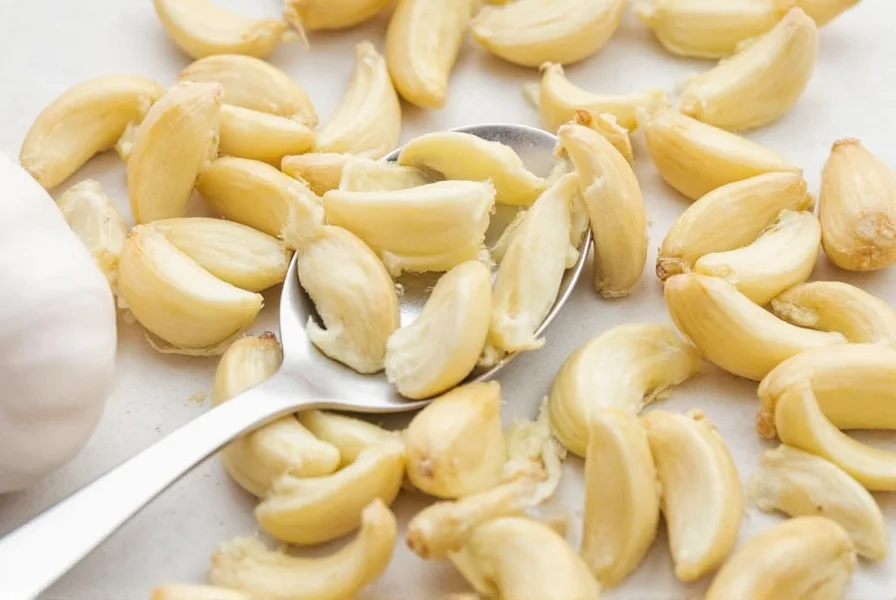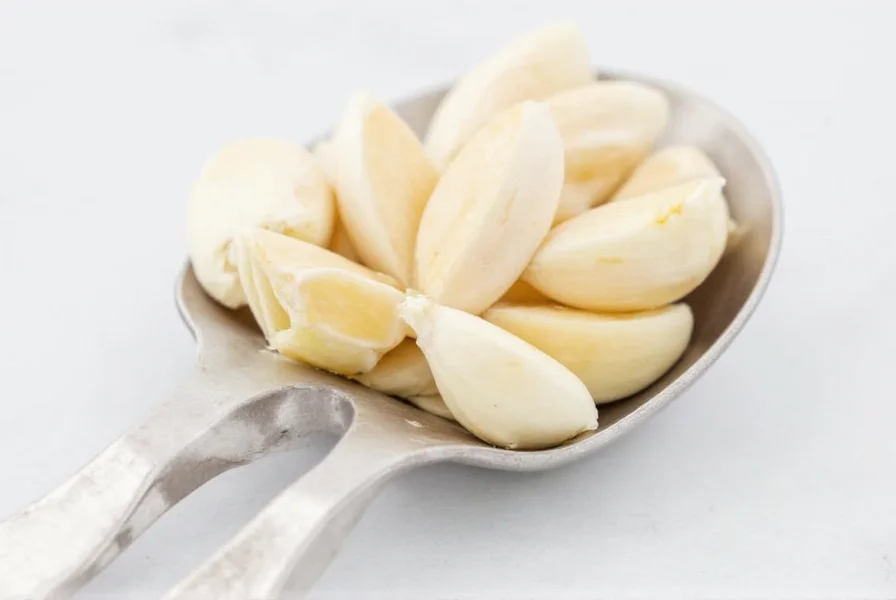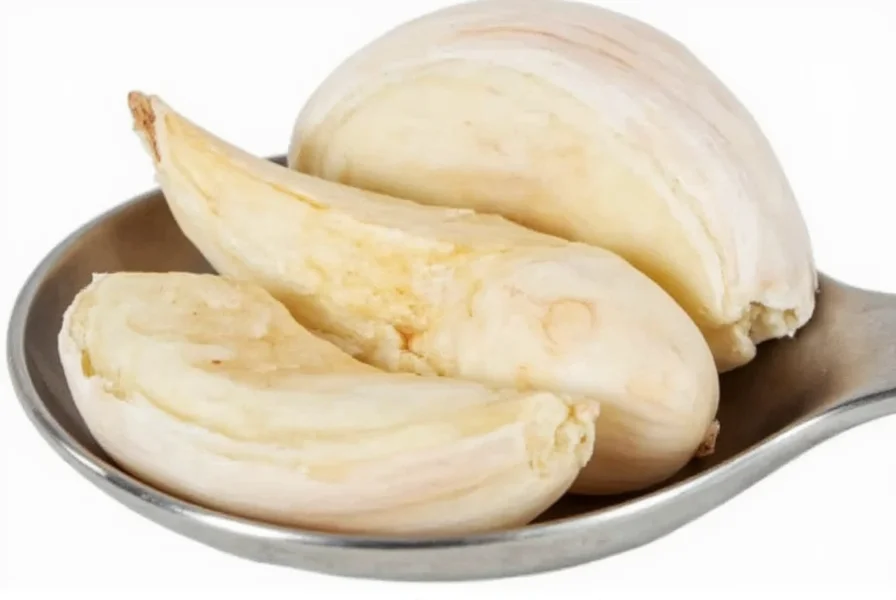Generally, 3-4 medium-sized garlic cloves yield approximately 1 tablespoon of minced garlic. This conversion can vary based on clove size and preparation method, with smaller cloves requiring 4-5 for the same volume and larger cloves needing only 2-3.
When following recipes that specify garlic measurements in tablespoons but you're working with whole cloves, understanding this conversion is essential for achieving the right flavor balance in your dishes. As an experienced culinary professional, I've found that precise garlic measurements can make or break a recipe's flavor profile.
Factors Affecting Garlic Measurement Conversions
The number of garlic cloves per tablespoon isn't fixed due to several variables that impact this culinary conversion. Understanding these factors will help you adapt measurements based on what you're working with in your kitchen.
Clove Size Variations
Garlic cloves vary significantly in size depending on the variety and growing conditions. A single head of garlic typically contains cloves of different sizes:
- Small cloves (about 1/2 inch long): 4-5 cloves = 1 tablespoon minced
- Medium cloves (about 3/4 inch long): 3-4 cloves = 1 tablespoon minced
- Large cloves (1 inch or longer): 2-3 cloves = 1 tablespoon minced
Preparation Method Matters
How you prepare your garlic significantly impacts volume. The same number of cloves will yield different tablespoon measurements depending on your technique:
- Minced garlic: Finely chopped pieces (most common measurement)
- Chopped garlic: Larger pieces yield slightly less volume per clove
- Pressed garlic: Garlic press yields more compact measurement (about 25% less volume)
- Roasted garlic: Softened cloves yield less volume when mashed
| Garlic Form | Cloves Needed for 1 Tbsp | Equivalent in Teaspoons |
|---|---|---|
| Minced (medium cloves) | 3-4 cloves | 3 tsp |
| Minced (small cloves) | 4-5 cloves | 3 tsp |
| Minced (large cloves) | 2-3 cloves | 3 tsp |
| Pressed garlic | 3-4 cloves | 2¼ tsp |
| Chopped garlic | 2-3 cloves | 3 tsp |

Practical Measurement Tips for Home Cooks
When converting between whole garlic cloves and tablespoons in your recipes, these practical techniques will help you achieve consistent results:
Estimating Without Measuring Tools
If you don't have measuring spoons available, use these visual references for garlic measurements:
- 1 teaspoon of minced garlic ≈ size of a standard dice
- 1 tablespoon of minced garlic ≈ size of a walnut
- 1 whole medium clove ≈ 1/2 teaspoon when minced
When Precision Matters Most
For certain dishes, garlic measurement accuracy becomes critical to the final flavor profile. Pay special attention to precise measurements when preparing:
- Vinaigrettes and delicate sauces where garlic flavor dominates
- Pesto and other herb-based sauces
- Garlic-infused oils
- Raw garlic applications like aioli
- Recipes with short cooking times that don't mellow garlic flavor
Substitution Guidance for Different Garlic Forms
Understanding garlic measurement equivalents becomes especially valuable when substituting between fresh and prepared garlic products:
- 1 teaspoon jarred minced garlic ≈ 1 medium fresh clove
- 1/2 teaspoon garlic powder ≈ 1 medium fresh clove
- 1/4 teaspoon garlic salt ≈ 1 medium fresh clove (reduce additional salt)
- 1 teaspoon garlic paste ≈ 1.5 medium fresh cloves

Advanced Garlic Measurement Considerations
Professional chefs and serious home cooks often consider additional factors when measuring garlic for optimal flavor development in their dishes.
Garlic Age and Moisture Content
As garlic ages, it loses moisture which affects volume measurements. Older garlic heads yield less minced volume per clove than fresh ones. When working with older garlic, you may need an additional clove to achieve the same tablespoon measurement.
Flavor Intensity Variations
While volume measurements provide consistency, remember that garlic flavor intensity varies by variety:
- Solo garlic (single clove variety): More intense flavor, use 25% less
- Purple stripe varieties: Stronger flavor, adjust to taste
- Artichoke varieties (common supermarket garlic): Standard intensity
- Rocambole varieties: Complex flavor, use standard measurements
Storage Impact on Measurements
Garlic stored at room temperature maintains better moisture content for accurate measurements compared to refrigerated garlic, which can become slightly dehydrated. If using refrigerated garlic, you might need an extra clove to achieve the same volume.
Common Garlic Measurement Conversions
Having these additional garlic measurement equivalents at your fingertips will streamline your cooking process and help when adapting recipes:
- 1 whole garlic head (medium, 10-12 cloves) = approximately 3-4 tablespoons minced
- 1 ounce (28g) fresh garlic = about 6-8 medium cloves = 2 tablespoons minced
- 1 clove garlic = 1/8 to 1/4 ounce by weight
- 1 cup minced garlic = 32-40 medium cloves
When precision matters in professional cooking or sensitive recipes, weighing your garlic provides the most consistent results. A kitchen scale eliminates the variability inherent in volume measurements of irregularly shaped ingredients like garlic cloves.











 浙公网安备
33010002000092号
浙公网安备
33010002000092号 浙B2-20120091-4
浙B2-20120091-4